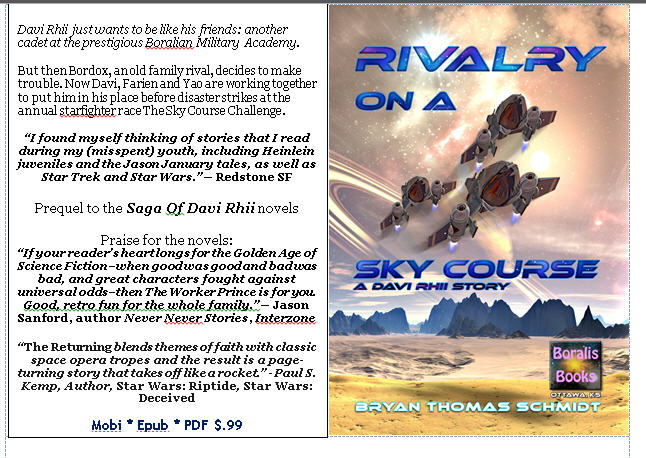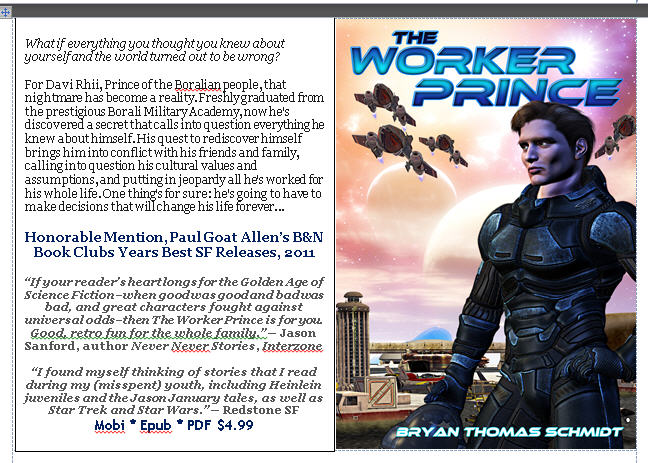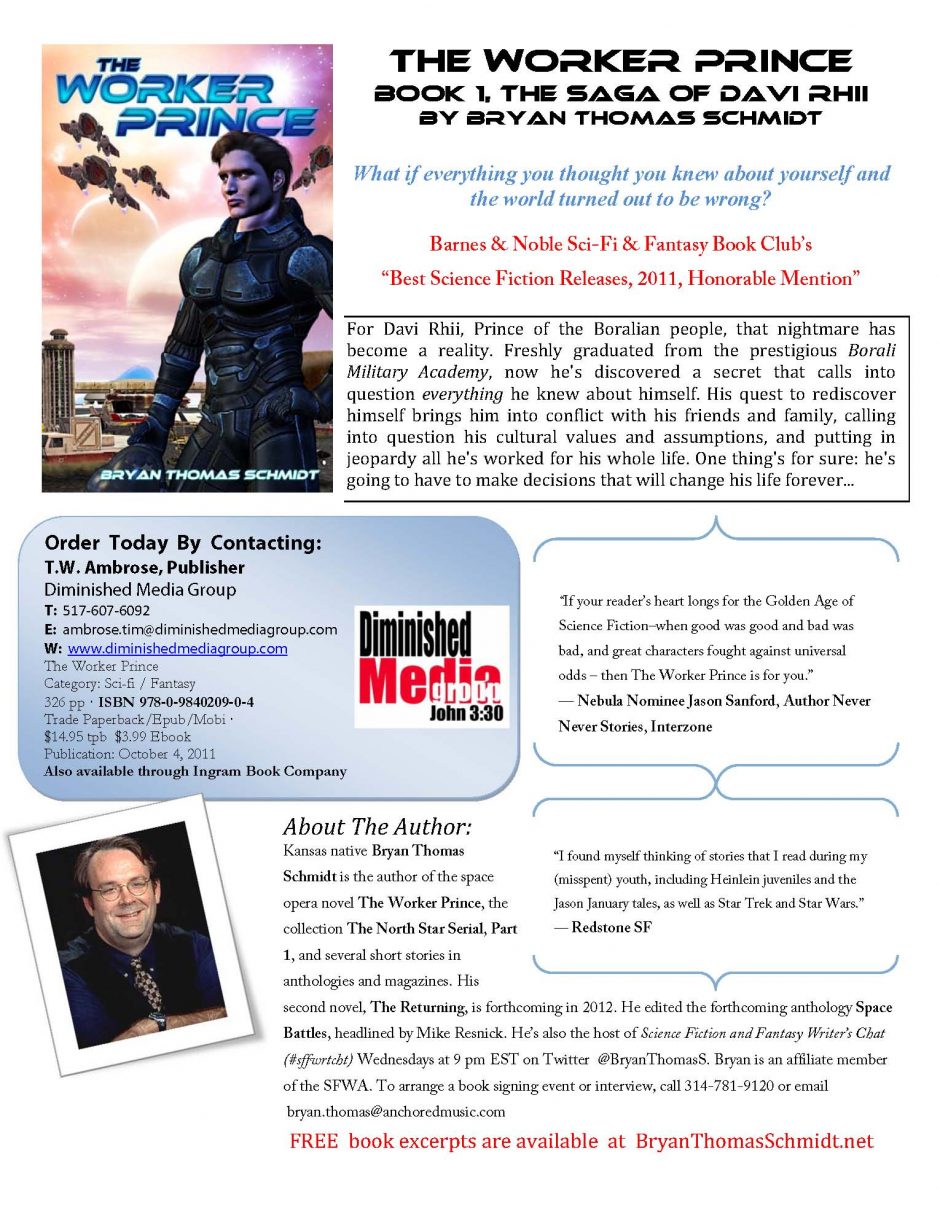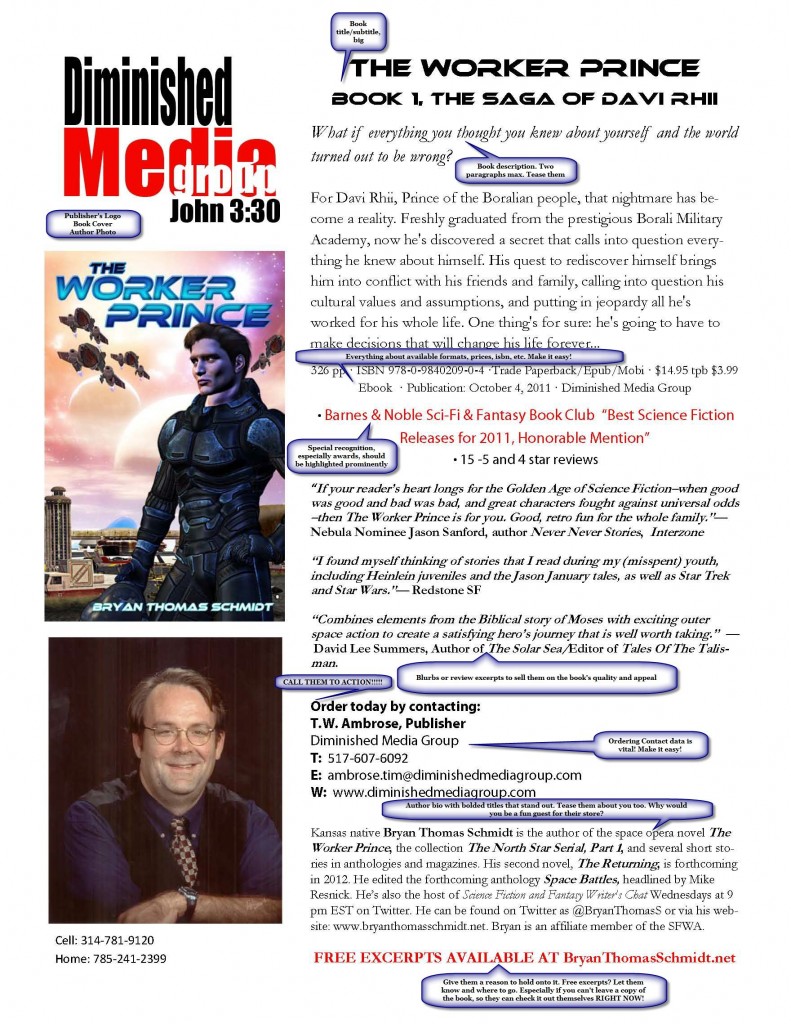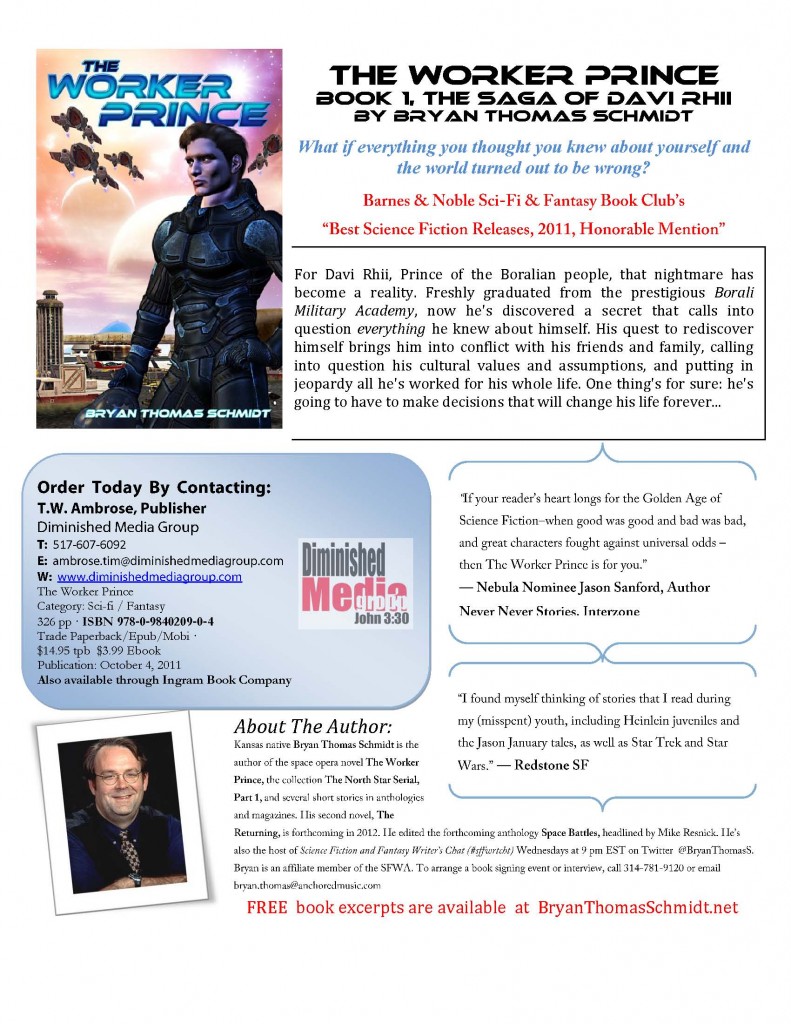 Ebooks are a huge market these days. Everyone knows the market share is growing. But the one problem with ebooks is when an author is making appearances, they’re often not readily available to sell. Interested readers have to go back to a computer or ereader and download them. And if the bookstore doesn’t have Wifi, it may not happen. Oh sure, they promise to do it later, but often those sales never materialize or, at least, there’s no effective way to measure them that tells you how successful your author appearances really are. Whereas people will buy paper books on the spot, and, often on impulse. So how do you take advantage of those sales with your ebooks for people who might still think the paper version is too expensive for their budget?
Ebooks are a huge market these days. Everyone knows the market share is growing. But the one problem with ebooks is when an author is making appearances, they’re often not readily available to sell. Interested readers have to go back to a computer or ereader and download them. And if the bookstore doesn’t have Wifi, it may not happen. Oh sure, they promise to do it later, but often those sales never materialize or, at least, there’s no effective way to measure them that tells you how successful your author appearances really are. Whereas people will buy paper books on the spot, and, often on impulse. So how do you take advantage of those sales with your ebooks for people who might still think the paper version is too expensive for their budget?
Dean Wesley Smith and his wife Kristine Kathryn Rusch are friends of mine and they are brilliant, not just as writers, but as business people. Their blogs are filled with all kinds of great advice, warnings and tips for writers. It’s no surprise that their blogs provided the answer to this delimma for me. In fact, I saw it in action at Larry Smith’s bookseller tables at Conclave in Detroit: ebook cards of Kris’ books. What are they?
Well on the outside, they look like this (works in progress):
They are pocket sized, greeting card-like brochures printed on light card stock, featuring the book’s cover and descriptions, etc. But inside, they contain a code for downloading the book when the buyer gets home. Yep. They buy it off your table, folded like a card and sealed with two of those round disk sealers that come on newsletters and mailers all the time. But the difference is, they download them after their already bought using codes and the weblink listed inside.
Here’s an example of the inside:
And yes, the code is fake, of course. But it won’t be on the real thing. With Smashwords or Paypal, you can change the codes whenever you want, so once an event is over, make a new code, then just hand write in on the cards for the next event or, even better, print labels with new code to go over the existing code. That way you can match downloads using the code with sales from your events to keep track of anyone who might “loan” the code to a friend or spread the word.
I think you get the idea. The beauty is that you can make these yourselves using Microsoft Word or Microsoft Publisher and then print them on your printer as you need them. I get two out of each sheet so I tend to take them with me about 20 each to events. Remember to offset the margins properly so they print on both sides lined up correctly. Then trim them down with a paper cutter, fold them, clip on those sticky round disks and you’re good to go. Note how I also list my other books with ISBNs so people can find them later.
You can even autograph these ebook cards so that ereading folk take home a signed book cover in effect. It can be set on a shelf or kept in a scrapbook, etc. very easily for collectors.
I think this is a brilliant idea Smith and Rusch have. They’ve even gone so far as to get theirs placed in stores. I’m just getting started with it, but to me, the possibilities are endless. And having these on hand can only help increase sales to people who are excited about the book on the spot but whose enthusiasm might fade later. After all, people are confronted with lots of books and items for sale at events and cons. It would be disappointing if they got distracted and never got around to checking out your books after they seemed so excited about them.
So, ebook cards, another do-it-yourself solution. Yes, professional printers could do these for you but they cost a lot more and you’d have to buy them in larger volumes. My total cost making mine was an hour of time for the original set up (doing a second book took 10 minutes just to modify data and change images) and then 1 ream of cardstock at around $7.50. That’s 250 sheets and thus 500 potential cards. 600 round/waffle mailing seals came in a pack for $8.67. So less than $17 total. Not a bad investment if you ask me. For what it’s worth…
By the way, when they’re done, they look like this and they fit in a standard business card holder:
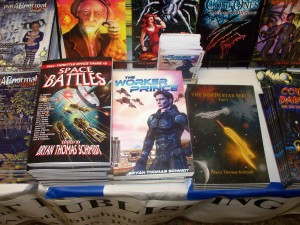 P.S. If you want to borrow my .doc template, I’ll happily send it to you. Just ask.
P.S. If you want to borrow my .doc template, I’ll happily send it to you. Just ask.
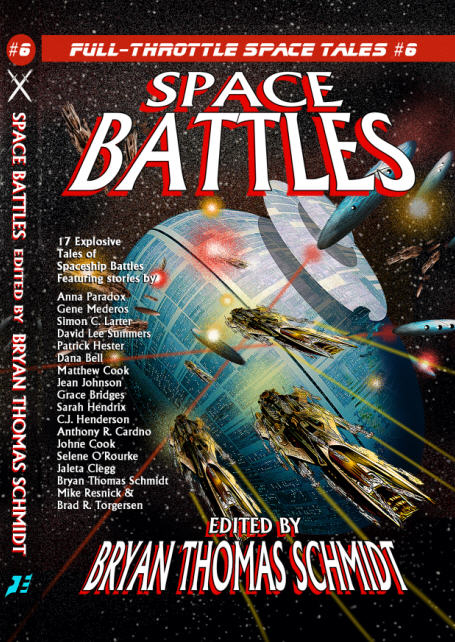 Bryan Thomas Schmidt is the author of the space opera novels The Worker Prince, a Barnes & Noble Book Clubs Year’s Best SF Releases of 2011 Honorable Mention, andThe Returning, the collection The North Star Serial, Part 1, and has several short stories featured in anthologies and magazines. His children’s book 102 More Hilarious Dinosaur Jokes For Kids from Delabarre Publishing along with the anthology Space Battles: Full Throttle Space Tales #6 which he edited for Flying Pen Press, headlined by Mike Resnick. As a freelance editor, he’s edited a novels and nonfiction. He’s also the host of Science Fiction and Fantasy Writer’s Chat every Wednesday at 9 pm EST on Twitter, where he interviews people like Mike Resnick, AC Crispin, Kevin J. Anderson and Kristine Kathryn Rusch. A frequent contributor to Adventures In SF Publishing, Grasping For The Wind and SFSignal, he can be found online as @BryanThomasS on Twitter or via his website. Bryan is an affiliate member of the SFWA.
Bryan Thomas Schmidt is the author of the space opera novels The Worker Prince, a Barnes & Noble Book Clubs Year’s Best SF Releases of 2011 Honorable Mention, andThe Returning, the collection The North Star Serial, Part 1, and has several short stories featured in anthologies and magazines. His children’s book 102 More Hilarious Dinosaur Jokes For Kids from Delabarre Publishing along with the anthology Space Battles: Full Throttle Space Tales #6 which he edited for Flying Pen Press, headlined by Mike Resnick. As a freelance editor, he’s edited a novels and nonfiction. He’s also the host of Science Fiction and Fantasy Writer’s Chat every Wednesday at 9 pm EST on Twitter, where he interviews people like Mike Resnick, AC Crispin, Kevin J. Anderson and Kristine Kathryn Rusch. A frequent contributor to Adventures In SF Publishing, Grasping For The Wind and SFSignal, he can be found online as @BryanThomasS on Twitter or via his website. Bryan is an affiliate member of the SFWA.
19 5-star & 4-star reviews THE WORKER PRINCE $4.99 Kindle http://amzn.to/pnxaNm or Nook http://bit.ly/ni9OFh $14.99 tpb http://bit.ly/qIJCkS.


